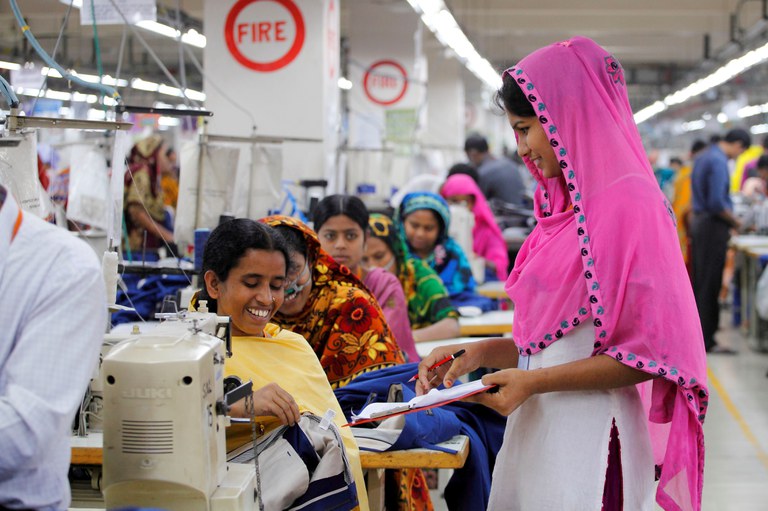International Women’s Day: Business Trends and Opportunities
I asked Kalpona Akter, a workers’ rights advocate who started working in the Bangladeshi garment industry at the age of 12, about the state of business and gender equality. As we enter the third year of the pandemic, has business done its part in supporting women who make up the majority of workers in her industry?
Akter replied: “We are not on a positive track. This pandemic has shown the draconian side of business. Many companies make payments through charity instead of paying workers what they are due: a living wage.”
Akter is not the only one to identify a lack of progress on gender equality. In the context of the pandemic, the World Economic Forum’s Global Gender Gap Report announced that it will take another generation to achieve gender parity, as closing the gender gap has moved from 99.5 years to 135.6 years.
McKinsey’s Women in the Workplace report last fall pointed to an increase of women in American-based companies taking on leadership roles—although these gains do not extend to women of color, who continue to be underrepresented at every stage of the pipeline. Despite this progress, all women are facing much higher levels of burnout than men, and many consider stepping back or dropping out of the workforce. Part of this is due to women, and particularly women of color, taking on additional work, looking after colleagues’ well-being, and building more inclusive workplaces—efforts that often go unrecognized and unrewarded.
BSR’s Women’s Empowerment Trends Report, developed with the UNGC, likewise points to limited progress in companies making meaningful changes to improve gender equality—and those changes we saw were often limited to commitment making rather than action implemented.
The fundamentals of how business can promote gender equality remain relevant and require sustained attention: removing bias from hiring and advancement practices, ensuring living incomes, workers’ rights, representation—especially for vulnerable groups—and considering how business decisions affect groups differently. Beyond the usual debate, what are the trends in the gender space that business leaders need to pay attention to this year? Where are opportunities for business to do better?
Stepping up on Care
By now, there’s much more recognition that invisible work, including caring for family members, the sick, children, and domestic tasks—work that is primarily completed by women—is essential to keeping economies running. Yet the disproportionate share of domestic work that women take on forms a barrier to their full participation in the paid workforce and is a primary obstacle to gender equality, as a new 17-country study from our friends at Women Deliver shows.
Global companies have taken steps to support employees, increasing flexibility and ability to work from home, providing more paid leave, supporting parents and caregivers for both women and men. These initiatives will be even more critical to attract and retain talent in 2022 and beyond. While there is no “one-size-fits-all” approach to flexibility in the workplace, listening to what employees value and being willing to experiment and adapt are important. Companies must also keep tracking data on the pipeline and ensure that policies don’t have negative consequences on individuals.
Tackling Gender-Based Violence
A rise in gender-based violence has formed a shadow pandemic that is characteristic of lockdowns, increased insecurity and stress within households, and reduced access to support services. With regards to global supply chains, increased production pressure and uncertainty contribute to a high-stress environment with greater risk for abusive behavior from managers.
A commitment to ending gender-based violence is critical, and taking action to address this within internal operations is a start. Companies can also demonstrate support for the ILO’s Convention 190 on eliminating violence and harassment in the world of work. Partnering with local organizations or collaborations such as Empower@Work is one way for companies to translate commitments to actionable measures to prevent and respond to gender-based violence in the supply chain.
Preparing for the Jobs of Tomorrow
Across sectors, the nature of work is in flux, and women stand to be left behind with the rise of new technology and digitalization, the emergence of jobs tackling the climate crisis, and other disruptive change. For example, the green gender gap, referring to the gap in skills addressing environmental sustainability, has not improved since 2015.
Companies can make sure that women have equitable access to upskilling and reskilling opportunities and combat occupational segregation that keeps women out of jobs traditionally held by men. Improving technical competencies and upskilling workers in the face of new automated technologies, for example, will be important in sectors such as manufacturing and services. Research indicates a combination of decision-making and soft skills are necessary alongside technical competencies, and an intentional approach to include women and underrepresented groups is key.
This International Women’s Day, the basics remain true, and business must remain committed to ensuring equal opportunities for women as employees, business partners, and community members. Akter reminds us that real action addressing issues that matter most to women, such as wages, should remain the focus. As we begin the third year of the pandemic, three areas require urgent investment from companies: addressing unpaid work and care, combating gender-based violence, and preparing for future jobs. We invite companies to reach out and engage on these important topics when considering how business can push for progress on gender equality.
About Lauren Shields
Lauren leads the impact and influence agenda for HERproject, working with global and local companies, business associations, donors, and partners to strengthen and amplify the impact of HERproject. She is also the business partnerships manager for DFID’s Work and Opportunities for Women program.

